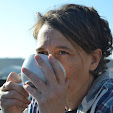Coronaversaries: rollouts and re-entry
It's a year ago this week that the UK went into its first coronavirus lockdown and I've spotted quite a few #coronaversary (coronavirus + anniversary) posts across social media as people share what they were doing a year ago and reflect on the past twelve months. So, it seemed like a good time to reflect on the language – or coronavocab – that's developed to describe life in an unprecedented year.
Looking back at my coronavocab posts from last summer, much of the language I highlighted has remained with us and become an all-too-familiar part of our everyday vocabularies; face masks, social distancing, hand sanitizer, lockdown, homeschooling. Some of the more light-hearted coinages also still float about in articles and blog posts; coronacoaster, covidiots, quarantinis, isobaking. But how has our language changed to reflect developments so far in 2021?
For a start, what we call the virus has gradually changed. It started off as coronavirus, but then got renamed (in Feb 2020, for the sake of accuracy) to Covid-19 and has, over time, just come to be known as Covid. Looking at some stats from the Coronavirus Corpus (which collects texts about the pandemic from across the internet), Covid on its own still seems to lag behind, but that's probably down to the fact that it's a corpus of written texts including a number of sources that likely prefer the full form. If you were able to look at spoken usage, I suspect Covid would shoot up the rankings.
What are you looking forward to re-entering or concerned about readjusting to in the coming months?
Labels: coronacoinages, coronavirus, coronavocab, corpus research, language change






0 Comments:
Post a Comment
<< Home